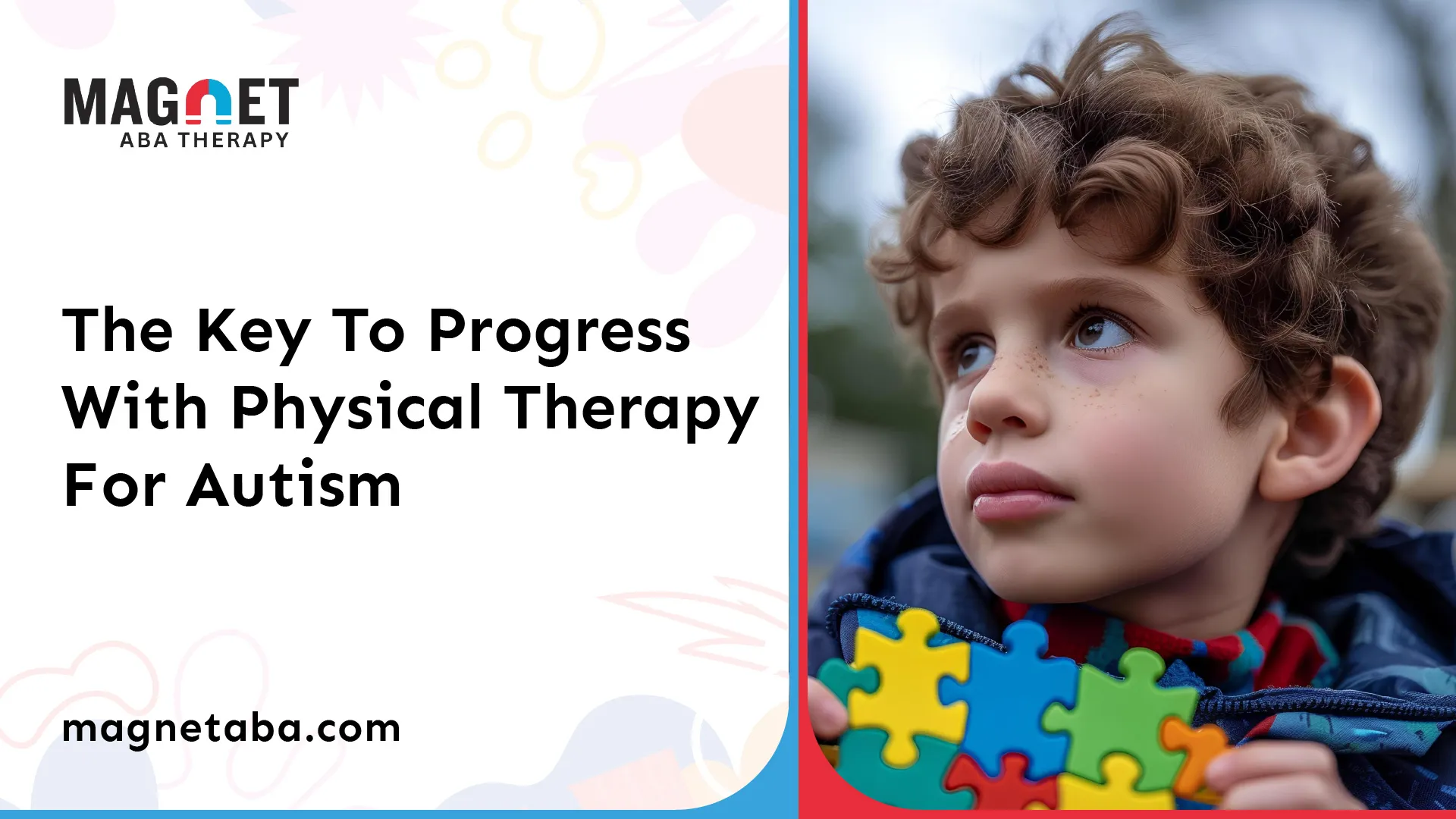Understanding Autism and Down Syndrome
To provide effective physical therapy for individuals with autism, it is important to understand the characteristics of autism and how it impacts individuals.
Differentiating Characteristics
Autism, also known as autism spectrum disorder (ASD), is a neurodevelopmental disorder that affects communication, social interaction, and behavior. It is characterized by a range of symptoms and can vary in severity from person to person.

Some common differentiating characteristics of autism include:
Impact on Individuals
Autism can have a significant impact on individuals' daily lives, affecting their physical, emotional, and social well-being. It is important to address these challenges to support individuals with autism effectively.
Physical therapy plays a crucial role in supporting individuals with autism by addressing their developmental challenges and enhancing motor skills. According to a meta-analysis of controlled trials involving 350 participants, physical activity interventions have been found to be effective in improving communication and social functioning in autistic children and adolescents [1]. These interventions have shown small to moderate benefits on communication and social functioning, with greater benefits observed in younger participants.
Physical therapists have unique training in child development and motor control, enabling them to assess a child's motor delays and functional performance. They work with the child, their family, and their school to help improve their movement skills and overall participation in daily activities. Physical therapy interventions can improve motor skills, coordination, and body awareness in individuals with autism, helping them develop functional motor skills and compensate for motor skill disturbances.
By understanding the differentiating characteristics of autism and the impact it has on individuals, physical therapists can tailor their interventions to address the specific needs of each individual with autism, promoting their physical and overall well-being.
Importance of Physical Therapy
Physical therapy plays a crucial role in supporting individuals with autism by addressing their developmental challenges and enhancing motor skills. It is well-established that physical therapy can have significant benefits for individuals on the autism spectrum, contributing to their overall growth and well-being.
Role in Autism Spectrum
Research has shown that intervention programs, including physical therapy, can help children with autism spectrum disorder (ASD) learn skills and improve their motor and overall development. Physical therapists work with children with ASD to develop age-appropriate movement skills, improve their strength, coordination, and ability to participate in daily routines.
In a meta-analysis of 12 controlled trials involving 350 participants, physical activity interventions were found to be effective in improving communication and social functioning in autistic children and adolescents. The interventions demonstrated small to moderate benefits on communication and social functioning, with greater benefits observed in younger participants.
Benefits for Development
Physical therapy for individuals with autism can address motor challenges and promote their overall development. It helps improve motor skills, coordination, and body awareness, enabling individuals to navigate their environment with greater ease and confidence [3]. Through targeted exercises and interventions, physical therapists can assist individuals in enhancing their balance, strength, and coordination, ultimately improving their ability to engage in various physical activities.
Moreover, physical therapy interventions contribute to the overall well-being of individuals with autism. They increase muscle strength, improve body awareness, and enhance physical fitness, positively impacting their ability to participate in daily activities and social interactions. By improving physical capabilities, physical therapy can boost self-esteem and confidence, leading to increased independence and a better quality of life [3].
The significance of physical therapy in the lives of individuals with autism cannot be overstated. By addressing motor challenges, enhancing development, and promoting overall well-being, physical therapy plays a vital role in helping individuals with autism reach their full potential.
Physical Therapy Techniques
Physical therapy plays a vital role in supporting individuals with autism. It encompasses various techniques and approaches tailored to address the unique challenges faced by individuals on the autism spectrum. Two commonly utilized physical therapy techniques for autism are sensory integration therapy and aquatic therapy.
Sensory Integration Therapy
Sensory integration therapy focuses on addressing sensory processing difficulties commonly experienced by individuals with autism. This therapy aims to help individuals regulate and interpret sensory information more effectively. By providing controlled sensory experiences, such as touch, movement, sight, and sound, sensory integration therapy helps individuals develop adaptive responses to sensory stimuli.
The goal of sensory integration therapy is to improve sensory integration, motor skills, coordination, balance, and body awareness. Therapists utilize various activities, such as swinging, jumping, and tactile stimulation, to stimulate and challenge the individual's sensory system. This therapy enables individuals to better navigate their environment and engage in daily activities with greater ease.
Aquatic Therapy
Aquatic therapy, also known as hydrotherapy or aquatherapy, is another effective physical therapy technique commonly used for individuals with autism. This therapy takes advantage of the unique properties of water to facilitate motor skill development, coordination, and sensory integration.
Water provides a supportive and buoyant environment, reducing the impact on joints and allowing for easier movement. The hydrostatic pressure of the water can provide a calming effect and increase body awareness. Additionally, the resistance offered by water helps strengthen muscles and improve coordination.
Aquatic therapy sessions often involve specific exercises and activities tailored to the individual's needs and goals. These may include floating, kicking, reaching, and other movements designed to enhance motor skills and sensory integration. The relaxed and enjoyable nature of aquatic therapy can positively impact individuals with autism, making it an engaging and effective therapeutic approach.
By incorporating sensory integration therapy and aquatic therapy into physical therapy sessions, individuals with autism can experience improved sensory processing, enhanced motor skills, and increased body awareness. These techniques play a crucial role in supporting their overall development and well-being.
Inclusive Approach to Therapy
Physical therapy for individuals with autism takes an inclusive approach that involves not only the individual but also their family members and provides support throughout their lifespan. This approach recognizes the importance of involving the family in the therapy process and providing ongoing support to ensure comprehensive care.
Family Involvement
Family involvement is a crucial aspect of physical therapy for individuals with autism. Parents and caregivers play a significant role in the success of therapy by actively participating in treatment planning, goal setting, and implementing therapeutic strategies. By being actively involved, family members can reinforce therapy techniques and exercises at home, facilitating progress and generalization of skills.
Collaboration between physical therapists and families helps in tailoring therapy to the specific needs and goals of the individual with autism. It also provides an opportunity for families to better understand their child's condition, develop strategies to support their progress, and navigate challenges that may arise during the therapy process.
Lifespan Support
Physical therapists with specialized training in working with individuals on the autism spectrum provide support throughout their lifespan, from early childhood through adulthood. This ongoing support helps individuals with autism maintain and improve their movement, function, and fitness, enabling them to participate in various aspects of their lives, including education, employment, and daily activities.
Physical therapy interventions for individuals with autism are tailored to address their unique challenges and goals. Therapists utilize a range of techniques and approaches to enhance motor skills, improve coordination and balance, and promote independence in daily living skills. By focusing on the individual's specific needs at different stages of life, physical therapists can provide targeted interventions that promote optimal development and functional abilities.
This inclusive approach to physical therapy for individuals with autism recognizes the importance of not only addressing their physical challenges but also supporting their overall well-being. By involving the family and providing ongoing support throughout their lifespan, physical therapy aims to enhance motor skills, improve body awareness, and promote social interaction, ultimately empowering individuals with autism to lead fulfilling lives.
Addressing Motor Challenges
Children with autism often face delays in developing motor skills and may experience difficulties with coordination and balance. Physical therapy plays a significant role in addressing these motor challenges and promoting the physical and mental well-being of individuals with autism.
Motor Skill Development
Physical therapists work with children diagnosed with autism to develop age-appropriate movement skills and improve their strength, coordination, and ability to participate in daily routines. Through targeted exercises, therapeutic techniques, and play-based activities, physical therapy can enhance motor skills in individuals with autism [3].
Research has shown that physical activity interventions have positive effects on communication and social functioning in autistic children and adolescents. A meta-analysis of 12 controlled trials involving 350 participants found that physical activity interventions had small to moderate benefits on communication and social functioning, with greater benefits observed in younger participants. Therefore, physical therapy not only focuses on motor skill development but also contributes to overall communication and social abilities.
Coordination and Balance Improvement
Children with autism may experience difficulties with coordination and balance. Physical therapy interventions aim to address these challenges by improving respiratory control, coordination, posture, and musculoskeletal alignment. By engaging in therapeutic exercises, individuals with autism can enhance their balance, coordination, and gross motor skills.
Physical therapy enables children with autism to develop fundamental motor skills such as sitting, rolling, standing, and running. Furthermore, it provides opportunities for engaging in activities like swimming, dance/movement, and play therapy, which further enhance coordination and balance. Improving coordination and balance not only aids in physical development but also contributes to overall confidence and independence in daily activities.
In conclusion, physical therapy is an essential component of comprehensive treatment and support for individuals with autism. It addresses motor challenges by promoting motor skill development, coordination, and balance. Through targeted exercises and therapeutic techniques, physical therapy plays a vital role in enhancing physical abilities, overall well-being, and facilitating engagement in daily activities for individuals with autism.
Enhancing Overall Well-being
Physical therapy for individuals with autism aims to improve not only their motor skills and physical abilities but also their overall well-being. It encompasses various aspects that contribute to a holistic approach to therapy. Two key areas of focus in enhancing overall well-being through physical therapy for autism are body awareness and social interaction benefits.
Body Awareness
Physical therapy plays a significant role in enhancing body awareness for individuals with autism. Through targeted exercises, therapeutic techniques, and play-based activities, physical therapists help individuals develop a better understanding of their own bodies and how they move. This increased body awareness can lead to improved coordination, balance, and muscle strength.
By cultivating body awareness, individuals with autism can gain a greater sense of control over their movements and become more confident in their physical abilities. This, in turn, can positively impact their participation in daily activities and promote independence in tasks such as self-care and functional skills.
Social Interaction Benefits
In addition to physical benefits, physical therapy can have a profound impact on social interaction for individuals with autism. Good gross motor skills have been shown to contribute to better socialization and communication abilities, leading to increased confidence in social situations.
Physical therapists with specialized training in working with individuals on the autism spectrum employ various techniques and approaches to address the unique challenges faced by these individuals. By incorporating movement, play, and social engagement into therapy sessions, physical therapists create opportunities for individuals with autism to interact with their peers and build social skills.
Collaborative activities, group exercises, and cooperative games within a therapy setting can enhance social interaction, promote teamwork, and foster communication. Through these experiences, individuals with autism can develop important social skills, such as turn-taking, sharing, and non-verbal communication, which can positively impact their confidence to navigate social interactions.
By focusing on body awareness and providing opportunities for social interaction, physical therapy for autism goes beyond addressing physical challenges. It aims to enhance overall well-being, empowering individuals with autism to better understand and control their bodies while fostering social connections and communication skills.
References
[2]:
[3]:
[4]:
[5]:
[6]:
[7]:












